
Sticks and stones can break bones – and so can osteoporosis

Air Force Master Sgt. Kimberly Kaminski, 380th Expeditionary Security Forces Squadron, flips a 445-pound tire during a workout at Al Dhafra Air Base, United Arab Emirates. Resistance training is just one of many steps to take to fight osteoporosis. (U.S. Air Force photo by Staff Sgt. Ross A. Whitley)
FALLS CHURCH, Va. — Bones are living, growing tissues that begin to feel the wear and tear of aging years before symptoms show. Osteoporosis, a severe form of bone density loss, affects roughly 10 million people in the United States. But once the disease becomes evident, usually as a broken bone, it’s too late to reverse the damage.
“Osteoporosis is a silent disease that doesn’t give patients any symptoms until something happens,” said Army Maj. Kate Kinnaird, an endocrinologist at Fort Belvoir Community Hospital in Northern Virginia. The National Institute on Aging defines osteoporosis as a disease that weakens bones to the point where they break easily, most often affecting the hip, backbone, and wrist.
As people grow, the body breaks down old bone and replaces it with new bone tissue until it reaches peak bone mass sometime between the mid-20s and early 30s, said Kinnaird. Bone continues to break down as a person ages, but the replacement process slows.
Bone density loss is a natural part of aging that impacts both men and women, but women are more likely to develop osteoporosis, said Kinnaird. According to the Department of Health and Human Services, more than 80 percent of Americans with osteoporosis are women.
Hormones also play a role in building and strengthening bones, placing post-menopausal women at risk for osteoporosis due to the loss of estrogen. Bone loss occurs the fastest in the first few years after menopause, with one in four women age 65 and older being affected in the U.S, NIA said.
In addition to gender and age, other risk factors for osteoporosis include low body weight, a small frame, family history of the disease, and lack of physical activity, Kinnaird said. Smoking, daily alcohol intake, eating disorders, certain medications, and certain diseases, such as hyperthyroidism and diabetes, can also increase risk.
“There are certain patients that we know based on their medical history, or the medications they’re on, that would be at higher risk of early bone loss, so we’ll screen them sooner than we would the general population,” said Kinnaird.
The U.S. Preventive Service Task Force recommends women aged 65 and older, as well as women younger than 65 who are at greater risk, get screened for osteoporosis. For post-menopausal women, bone density is tested through an exam that compares a patient’s bone density to the density found in an average healthy adult of the same gender. The test result, known as a T-score, indicates how strong bones are, whether osteoporosis or low bone mass exist, and if the individual is at risk for having a fracture, said Kinnaird. For women who haven’t gone through menopause but have at least two risk factors, bone density is compared to patients in their own age group, she said.
Air Force Maj. Christopher Wild, a staff orthopedic surgeon at Wright Patterson Air Force Base in Ohio, said being able to identify and treat people who have signs of bone loss can help prevent fractures. Once a person is diagnosed with osteoporosis, treatments focus on preventing further bone loss. Such treatments, which usually focus on proper nutrition and exercise, are based on the cause of the disease. The choice of medication is dependent on the severity of the bone loss and the patient’s risk for fracture, he added. Medications can include bisphosphonates, estrogen therapy, hormone therapy, parathyroid hormone, or calcitonin,
“The best treatment for osteoporosis is prevention,” said Wild. He recommends eating healthy, staying active, and having vitamin D and calcium daily to help maintain strong bones.
“Young people in their late teens and 20s can still influence their peak bone density, so it's important to make sure to be active and eat healthy while young and growing,” he said. A diet with nutrient-rich foods, such as dairy, fish, fruits, and vegetables can improve a person’s overall health and the health of the bones. The recommended daily intake for an adult is 1,200-1,500 milligrams of calcium and 800-1,000 IUs of vitamin D per day, he said, while children ages 9-18 should get 1,300 milligrams of calcium.
While low-impact workouts, such as swimming, can be good exercise, Kinnaird recommends using weight-bearing exercises, strength training, or resistance training for bone health. Exercises like walking and running can add enough stress to bones to maintain their strength, she said.
“Osteoporosis may be more common among older women, but it’s important to take care of ourselves as early on as possible, “said Kinnaird. “The choices we make every day about food and exercise can make a significant difference later on in life. It’s not too late to start.”
Navy Medicine leads the way in 3D mammography
Article
10/12/2018
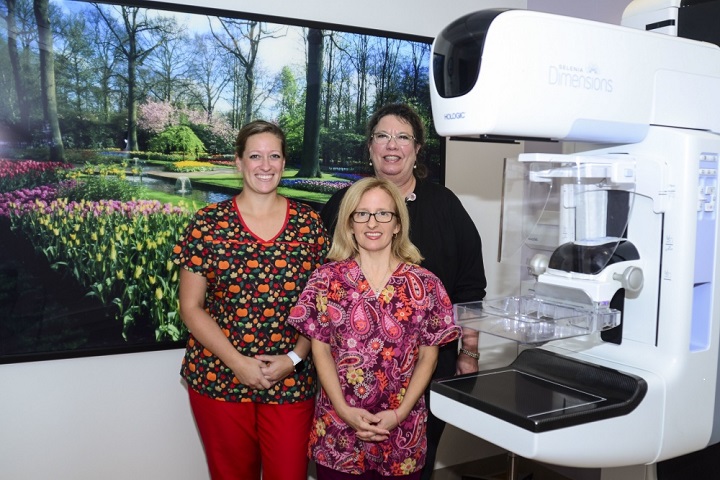
Early detection is key to beating breast cancer
Military Midwives in Leadership Roles
Video
10/5/2018

The duties of certified nurse midwives go far beyond the labor delivery room. Cmdr. Kim Shaughnessy explains how midwives hold leadership positions across the Military Health System and how they help shape women's health policy.
Mammograms recommended for early detection of breast cancer
Article
10/4/2018

A mammogram is a low-dose x-ray used to detect the early stages of breast cancer
Midwives in the Military
Video
10/3/2018

Military midwives are key in the Department of Defense's priority of medical readiness. Army Lt. Col. Danielle Molinar shares ways midwives keep female soldiers ready to deploy.
Swimming for good health: Just go with the flow
Article
9/6/2018

Aquatic exercise is a low-impact alternative to running
Army researchers develop tasty, healthy performance bar
Article
9/4/2018
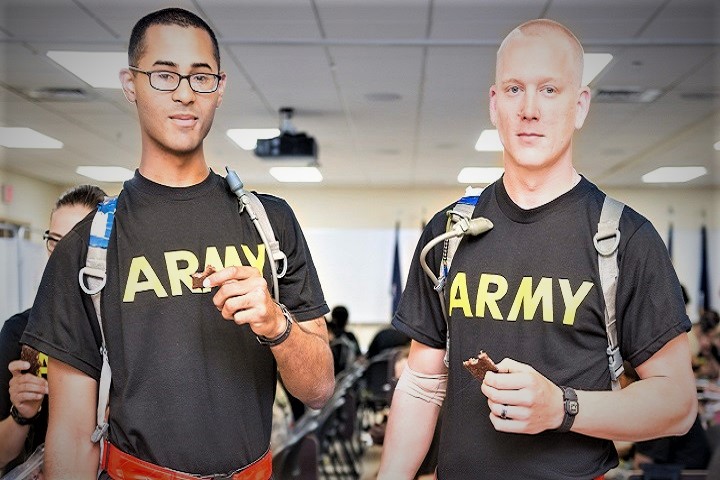
Researchers aren’t working to provide recruits and soldiers with something that only tastes good; it has to make sense for their nutrition
Going the distance runs in the family
Article
6/14/2018

For this father/daughter team, running, and the Marine Corps principles that carry them, are in their blood
New simulator preps WBAMC staff for OB emergencies
Article
5/1/2018
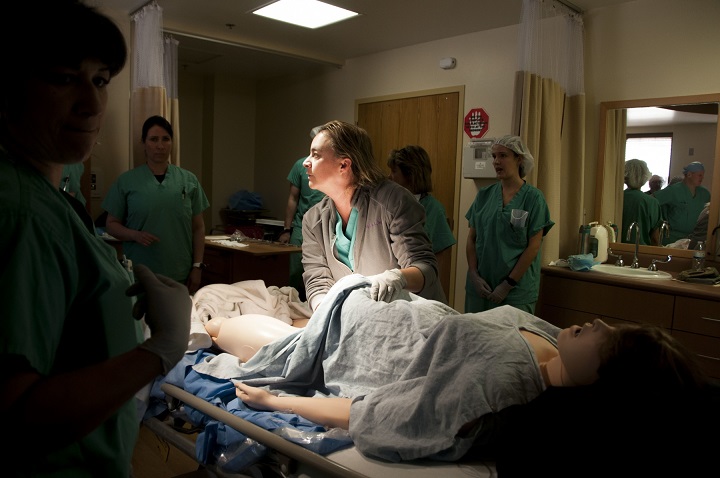
The state-of-the-art simulator provides medical staff up to various cutting-edge training scenarios
Getting tested for STIs is an 'important part of sexual health'
Article
4/26/2018
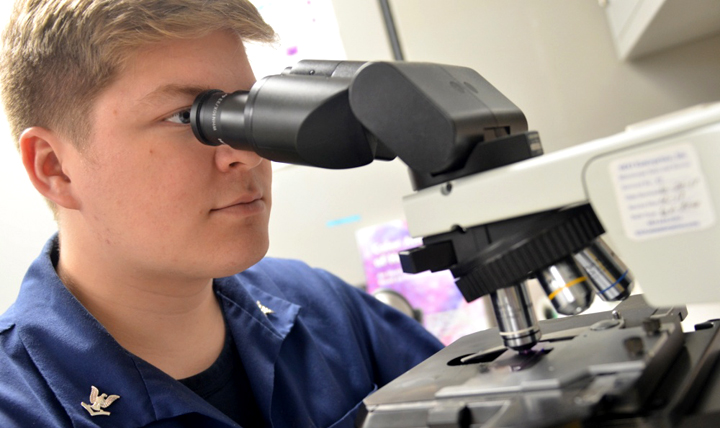
Chlamydia and gonorrhea are two of the most common sexually transmitted infections in the United States. Taking preventive steps, like getting tested and practicing safe sex, can help reduce risk of infection or spreading the infection to others.
Fort Belvoir corpsman comes through for moms
Article
4/20/2018

Striving to empower, lactation consultants critical for mothers, babies
Deep vein thrombosis: What you need to know
Article
4/9/2018
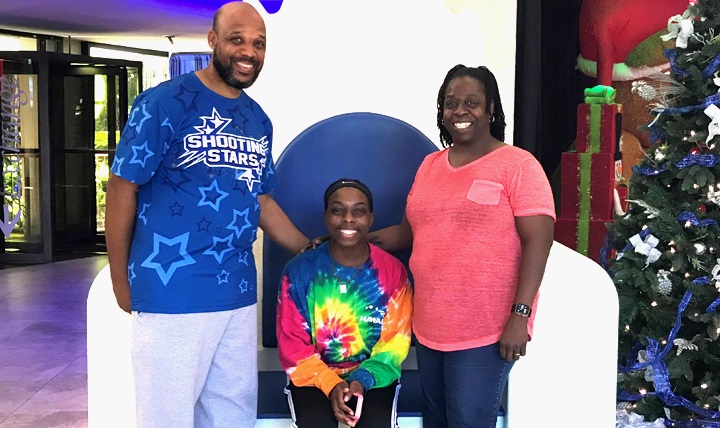
Everyone’s potentially at risk, vascular surgeon says
Small changes, big results: Healthy lifestyle choices can make a difference for heart health
Article
4/6/2018

Risk for heart disease, the number one killer of Americans every year, can be decreased through healthy lifestyle and nutrition choices
Breakfast (and lunch, and dinner) of champions: What this Olympian eats
Article
3/30/2018

March may be “cheat month,” but slider sticks close to regular diet
Eat an apple a day, but don't keep the dentist away
Article
3/27/2018

Good oral health takes more than brushing teeth and flossing – it also requires proper nutrition
Fuel your body during National Nutrition Month
Article
3/16/2018

More than one-third of adults in the U.S. are obese and obesity-related conditions are one of the leading causes of preventable deaths






















.png)











No hay comentarios:
Publicar un comentario